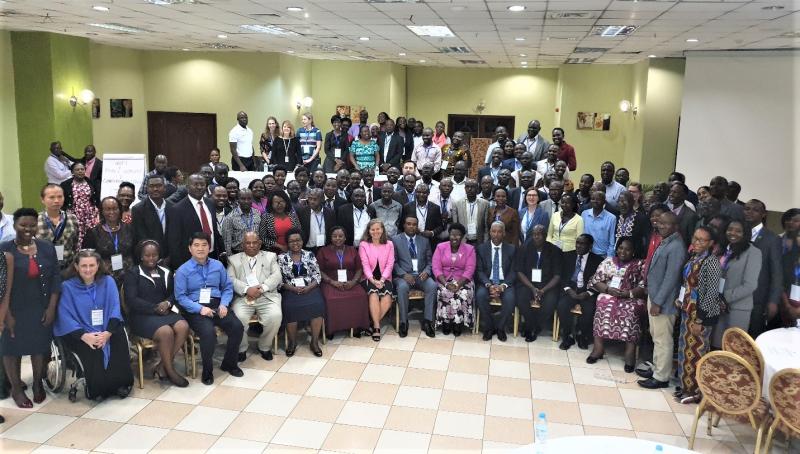
Enhanced preparedness an important factor for swift control of Ebola, as shown in Uganda’s Kasese District
November 21, 2019
Three recent cases of confirmed Ebola virus disease (EVD) in June on the border of Uganda and Democratic Republic of Congo show just how painstaking and difficult the everyday work is to be prepared for and to contain the current outbreak.
More than 1,700,000 people were screened in less than a month at a part of the border with 30 points of entry. On 11 June, 2019, the Ugandan Ministry of Health reported a confirmed case of EVD to the World Health Organization. The case was a 5-year-old boy.
The boy had travelled to Uganda from Mabalako, DRC, where he and his relatives had participated in a burial of his grandfather, who was thought to have died from EVD.
Screening at the National Border Health system at Kasindi health checkpoint showed the boy was ill, and he was presented to Kagando hospital in Kasese district, where the attending health worker suspected Ebola as the possible cause of illness. The boy was then transferred to Bwera Ebola Treatment Centre (ETC) in Kasese. Two of the family members that had travelled with the boy from DRC also developed Ebola-like symptoms and tested positive for Ebola Zaire virus. The boy as well as the second case, his grandmother, died at Bwera ETC. The 3rd case (sibling to the first) was repatriated to DRC but died on arrival there.
The MoH requested an after action review (AAR) of the EVD outbreak response in Kasese, which was conducted from 29-30 August 2019 in Kampala and brought together all main stakeholders who were involved in the response. The AAR used WHO methodology to review the main key functions of the EVD response, including coordination, surveillance, case management, infection prevention and control, risk communication and community engagement, vaccination and logistics. It showed that early action and an all-front approach helped to quickly control the outbreak in Kasese as it happened in June. Eighty percent of the interventions happened within 2-3 days of notification.
Good cross border collaboration between DRC and Uganda facilitated the smooth sharing of information; a strong partner coordination (with some 21 organizations) hold regular meetings and coordinate activities in the field. There is good surveillance at the border with 30 points of entry and posts of control established, with more than 1,700,000 people screened in less than a month, enhanced community-based surveillance reaching more than 227 villages in and around Kasese district. An the onsite EVD sample testing laboratory in Kasese significantly reduced the turnaround time from 24 hours to less than 3 hours before laboratory results are available.
The disease continues to take a toll and the threat of EVD crossing borders remains. But the cases in June showed lessons for improved future preparedness and response to EVD in case of any new importation of the EVD virus in the country, and the key findings will be shared with the neighboring countries.